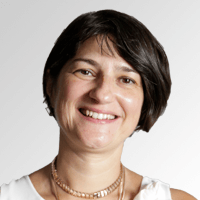
Knowledge and Culture bring Portugal and China closer: China seen from Europe: 16th-19th centuries
2023-12-11


By Rui Lourido, historian, and president of the Observatory for China
China has been part of the European imagination since ancient times, as a space where myths, dreams, expectations, and fears are projected.
Europe got to know China better, especially since the end of the Middle Ages, through the relationships of some Christian merchants and missionaries. But it was at the beginning of the 16th century, within the framework of Portuguese maritime expansion, that a more constant presence of Europeans on the coast of China allowed for a gradually more complete knowledge of the great Kingdom of China.
The exhibition - China seen from Europe: 16th-19th centuries, is organized by the China Observatory and the National Library of Portugal (with the institutional support of the Chinese Embassy, the Union of Portuguese-Speaking Capital Cities and the Lisbon City Council and research centers and universities in Portugal, Italy, America and China), and aims to contribute to a better knowledge of history and the development of geographic and cartographic knowledge that allowed Portugal to establish the longest relations in Europe with China. It also aims to promote reflection and dialogue on the importance of cultural and civilizational ties, relevant for deepening relations, in the present and the future, between Portugal/Europe and China.
This exhibition opened on November 29th at the National Library of Portugal and will remain on display until March 2nd, 2024, in Lisbon.
Macau is one of the centers of this exhibition because, since the 16th century, it has been a strategic stage for the Portuguese-Asian presence in China, as a center of knowledge and commerce, becoming a gateway for Europeans to China.
The exhibition includes maps, literary works, and art objects that played a relevant role in building the image of China as a very developed and sophisticated civilization, and in its dissemination in Europe, between the 16th and 19th centuries. In addition to documentation from the National Library of Portugal, the exhibition also includes relevant documentation from several libraries (Ajuda, Publica de Évora, the Arquivo Nacional da Torre do Tombo and the Geography Society of Lisbon) and several private collections (from Fundação Jorge Álvares, and that of Jorge Welsh), national museums (such as the National Museum of Ancient Art, the Macau Museum of the CCCM, the Orient Museum of the Fundação Oriente, the Marine Museum, the Medeiros e Almeida Museum) or international museums (Library Mediceia Laurenziana, Museo Galileo, Florence, Istituto di Storia dell'Europa Mediterranea (ISEM), Italy, the Lee Shau Kee Library, The Hong Kong University of Science and Technology and the James Ford Bell Library, University of Minnesota (USA).
The Portuguese and European cartographic core of the exhibition reveals the process of building a new, progressively more complete image of China, from the coast to the interior of the Chinese empire.
Chinoiserie(s): China in the European imagination is another core of the exhibition, which seeks to illustrate the impact of the import of precious, decorative, and utilitarian products from China on the new taste of oriental influence in European daily life, through multiple forms: social habits and consumption, namely tea, clothing, interior decoration and garden design. This influence also revealed itself in the European mentality of the 18th century, especially in the Enlightenment, as an instrument of criticism of European society at the time. Apology for China's political and socioeconomic model was used by the Enlightenmentists as an instrument to defend their vision and rationalist proposals that they intended to see triumph in European society.
The curators of the exhibition are Alexandra Curvelo, Department of Art History at NOVA-FCSH, Institute of Art History (IHA), NOVA FCSH, Angelo Cattaneo (CNR – Consiglio Nazionale delle Ricerche, ISEM - Istituto di Storia dell'Europa Mediterranea ); and Rui Lourido, Historian, President of the China Observatory.
Consult the catalogue: https://issuu.com/uccla/docs/china_vista_da_europa_brochura_final
ARTIGOS RELACIONADOS

2024-01-03
Speech by President Xi Jinping on New Year's Eve 2024

2023-12-11
Knowledge and Culture bring Portugal and China closer: China seen from Europe: 16th-19th centuries

2023-12-07
The EU-China summit, an opportunity to rebuild peace and cooperation in Eurasia

2023-11-24
Macau and the reunion

2023-11-17
"China and American decoupling and European de-risking"

2020-02-20
China’s environmental achievements can’t be overlooked by West’s myope
Publication: Global Times
